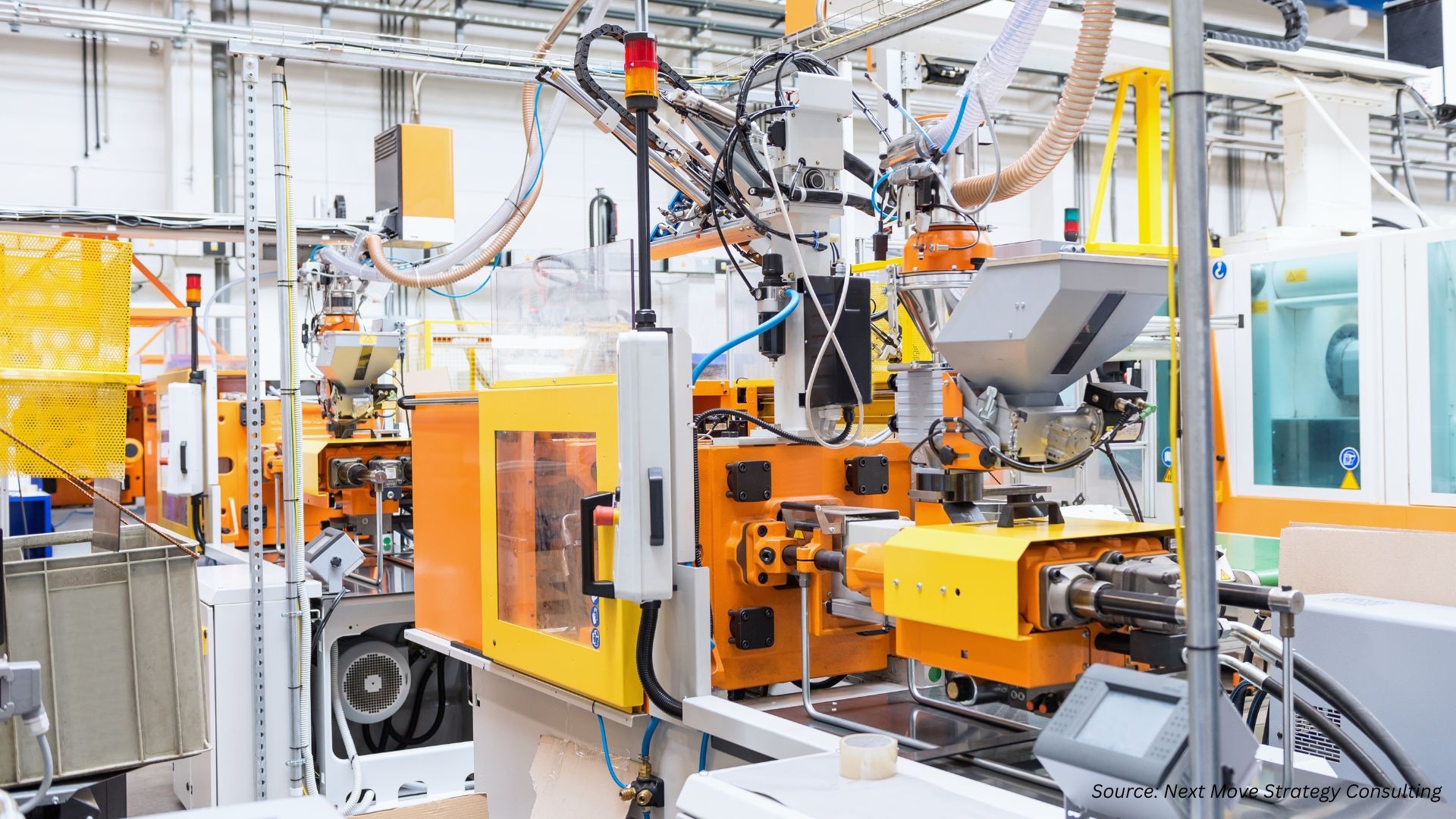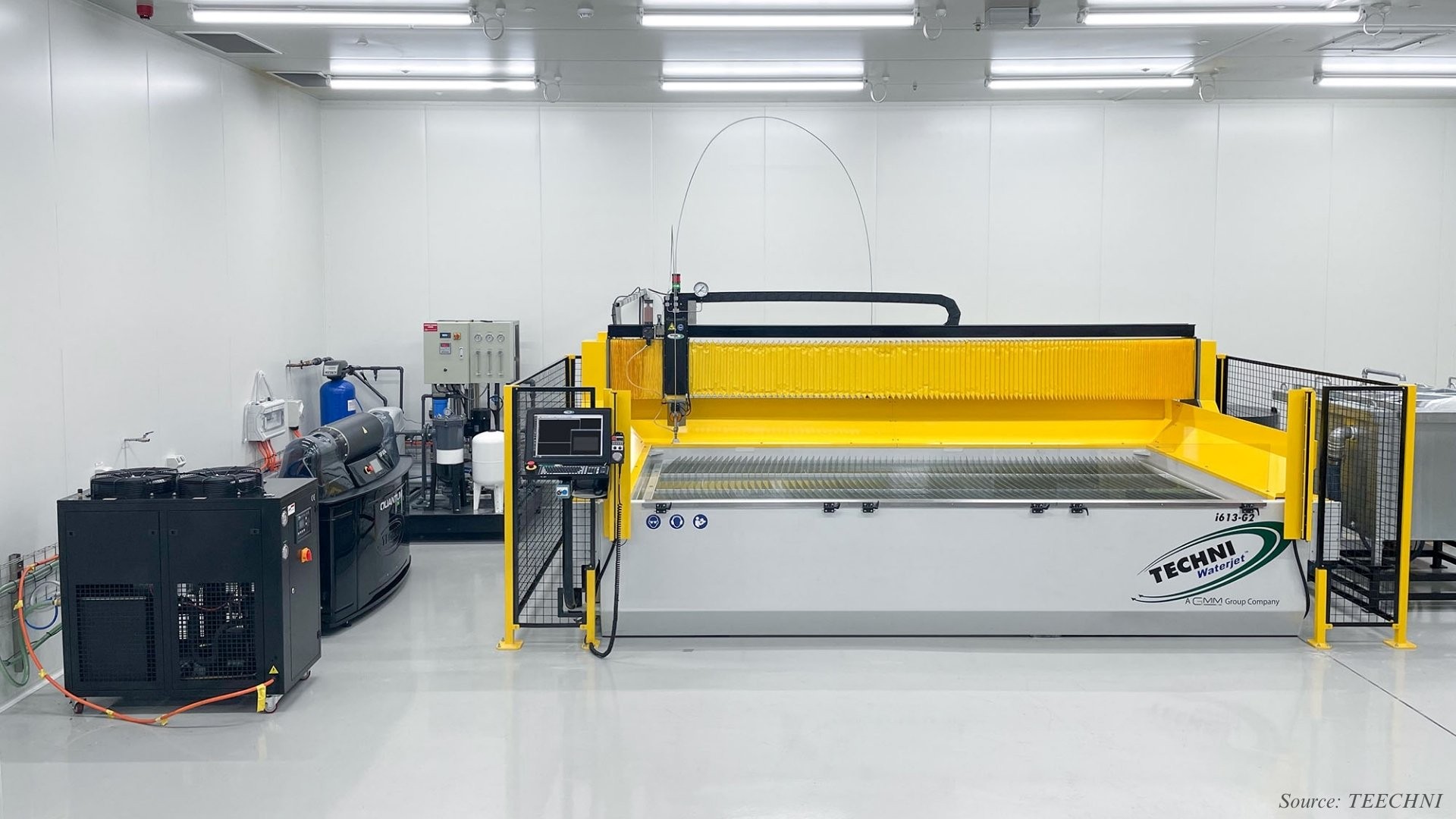Electric Injection Molding Machine Innovations for the Future
Published: 2025-09-17

The electric injection molding industry is undergoing a remarkable transformation, driven by the shift from hydraulic to all-electric technology. At K 2025, Sumitomo (SHI) Demag will showcase its most advanced all-electric injection molding machines, highlighting breakthroughs in efficiency, robotics integration, and system versatility. These innovations not only address growing demand for sustainable solutions but also demonstrate how engineering excellence and global collaboration are shaping the future of manufacturing.
Sumitomo (SHI) Demag to Showcase Cutting-Edge Developments at K 2025
At K 2025, Sumitomo (SHI) Demag (Hall 15, Booth D22) will present its most innovative and customer-focused advancements to date, demonstrating how the unique collaboration between industrial experts in Germany and Japan is driving enhanced process efficiencies.
Customers adopting Sumitomo (SHI) Demag technologies gain increased agility—both today and in the future—reinforcing the company’s commitment to a sustainable, high-performance future powered by state-of-the-art all-electric injection molding machines.
Sumitomo (SHI) Demag to Unveil All-Electric Innovations and Robotics Advancements at K 2025
Aligned with its new theme “Today. Tomorrow. Electric.”, Sumitomo (SHI) Demag is set to make a strong impression at K 2025. The company will present eight all-electric machines, including multiple models from the IntElect platform, catering to manufacturers across diverse market segments. A major highlight will be the launch of two brand-new PAC-E machines, engineered as high-speed all-electric “fast-runners.” These innovations were developed on a global platform through close collaboration with electric drive specialists in Japan.
Robotics will also take center stage at the company’s booth, supported by additional process improvement solutions from sister company Leifeld, part of the Sumitomo Heavy Industries Group.
Key Highlights at K 2025
-
Eight All-Electric Machines: Featuring IntElect models designed for broad market applications.
-
New PAC-E Machines: Purpose-built as the ultimate fast-runners for high-speed molding performance.
-
Robotics Focus: Integration of advanced automation solutions, complemented by Leifeld’s process innovations.
-
All-Electric 2K Multi-Component IntElect 350t: Debuting in combination with a SAM-C20 robot, offering enhanced flexibility with adjustable nozzle distance.
-
Top-Entry Robot Advantage: Addressing demand for higher stability and precision in a compact footprint.
-
Single-Supplier Integration: Sumitomo (SHI) Demag demonstrates the value of partnering with one supplier for complete solutions—covering customization, technology integration, and cell validation, including installation of safety components, robotics, peripherals, and conveyor technology.
By combining advanced machinery, robotics, and system integration, Sumitomo (SHI) Demag reinforces its role as a full-solution provider for the injection molding industry, delivering efficiency, flexibility, and performance.
Strategic Collaborations Driving Future-Ready Innovations
As part of the Sumitomo Heavy Industries Group, Sumitomo (SHI) Demag leverages the strength of a global network of specialist companies, shared expertise, and close cross-company collaborations. This powerful alliance enables the company to harness cutting-edge technologies and innovations, creating valuable synergies that deliver greater reliability and future-readiness for customers—even in challenging times.
A notable example of this collaborative strength is the Moriyama Mixer, which will be featured at the Sumitomo (SHI) Demag booth. Developed jointly by German metal-forming specialist Leifeld and Japanese SHI subsidiary Nihon Spindle Manufacturing, the Moriyama Mixer embodies efficiency and user-friendliness. Its design allows for rapid material changes, while easy cleaning and maintenance ensure minimal downtime.
Compliant with stringent European standards, Moriyama Mixers represent one of the most flexible and efficient blending solutions available today. They highlight the SHI Group’s unwavering commitment to quality, innovation, and global collaboration, reinforcing the company’s position as a trusted partner for forward-looking manufacturing solutions.
Key Highlights of Sumitomo (SHI) Demag at K 2025
|
Feature / Innovation |
Description |
|
Eight All-Electric Machines |
Includes multiple IntElect models designed for broad market applications. |
|
New PAC-E Machines |
High-speed all-electric “fast-runners” for advanced molding performance. |
|
Robotics Focus |
Integration of automation solutions, supported by Leifeld’s process innovations. |
|
All-Electric 2K IntElect 350t |
Debut with SAM-C20 robot, offering adjustable nozzle distance for added flexibility. |
|
Top-Entry Robot Advantage |
Provides higher stability and precision with compact footprint. |
|
Single-Supplier Integration |
End-to-end solutions including safety components, robotics, peripherals, and conveyor technology. |
Energy Efficiency and Performance Advancements in All-Electric Injection Molding Machines
Compared to traditional hydraulic presses, all-electric injection-molding machines offer significant energy savings. By replacing hydraulic lines, fittings, and oil coolers with electric wires, motors, and drives, these machines achieve a cleaner design with clear environmental advantages. Beyond sustainability, they deliver superior repeatability, resulting in higher-quality parts and increased production efficiency.
Whether these advantages justify the higher upfront cost of electric technology ultimately depends on the molder’s priorities. However, this debate is gradually giving way to engineering innovation. Engineers are steadily increasing clamp forces as larger servo motors become available, while simultaneously developing ways to maximize the performance of existing motors.
For instance, Cincinnati Milacron (Batavia, OH) has introduced a two-stage injection unit for its all-electric Powerline series, providing up to a fourfold increase in effective shot capacity. Similarly, UBE Machinery Inc. (Ann Arbor, MI) synchronizes two 55-kW AC servo motors to deliver high shot capacity on its 950-ton all-electric machines. For design engineers, these improvements in shot capacity and clamp force allow greater flexibility, enabling the creation of larger and more complex molded components with simplified designs.
Advantages of Servo-Driven All-Electric Injection Molding Machines
Unlike hydraulic power units that require continuous pump operation, servo motors cut electrical consumption by an estimated 60–80%. This energy efficiency is complemented by reduced noise levels—up to 25% lower—thanks to the elimination of hydraulic pumps and other ancillary components.
Another major advantage is the ability to drive the injection unit independently from the clamp unit, enabling simultaneous operation. When paired with high clamping force, this capability is ideal for producing large thin-wall parts with significantly shorter cycle times.
Advanced injection pressure control systems further enhance performance by supporting low-pressure molding, effectively eliminating flash, warp, and residual stress. Additionally, servo-controlled clamping expands the versatility of each machine, making them suitable for specialized processes such as injection compression, injection press, and laminate insert molding.
Market Outcome of Electric Injection Molding Machines
The growing adoption of electric injection molding machines is reshaping the industry in a highly favorable way. As manufacturers worldwide focus on energy efficiency, precision, and sustainability, these machines are emerging as a strong alternative to conventional hydraulic systems. Their alignment with smart manufacturing and automation trends makes them an attractive choice for forward-looking companies.
Main Positive Impacts:
-
Energy Savings: Up to 60–80% lower energy use significantly reduces operating costs and carbon footprint.
-
High Precision and Repeatability: Improved consistency ensures better product quality and fewer rejections.
-
Lower Noise and Maintenance Needs: The absence of hydraulic components minimizes downtime and enhances workplace conditions.
-
Faster Cycle Times: Independent operation of the clamp and injection units accelerates production, especially for thin-wall applications.
-
Sustainability Compliance: Meets tightening global regulations and customer demand for eco-friendly processes.
-
Process Flexibility: Servo-driven clamping enables advanced processes like injection compression and laminate insert molding.
Challenges and Limitations in the Market
While the benefits are substantial, electric injection molding machines also bring challenges that affect their adoption rate. These drawbacks are most evident in cost-sensitive industries and applications requiring extremely high clamping forces.
Main Negative Impacts:
-
Higher Capital Investment: Considerably more expensive upfront than hydraulic machines, limiting accessibility for smaller molders.
-
Constraints at Very High Tonnage: Hydraulic presses still hold an edge in ultra-large applications where cost and force requirements are critical.
-
Technical Complexity: Advanced servo and control systems require specialized skills, increasing training and operational demands.
-
Slower Uptake in Price-Sensitive Regions: Developing markets may continue to rely on hydraulics due to affordability.
-
Service Availability Gaps: Hydraulic machines often have broader service networks and easier spare-part access compared to newer electric systems.
Summary
Overall, the influence of electric injection molding machines on the market is largely positive, driven by their energy efficiency, sustainability, and precision. However, cost and application constraints remain barriers to universal adoption. With ongoing innovation and expected cost reductions, electric machines are set to capture an even greater share of the global injection molding market in the coming years.
Conclusion
The evolution of electric injection molding machines reflects a clear industry shift toward efficiency, precision, and sustainability. With companies like Sumitomo (SHI) Demag leading innovation through advanced all-electric platforms, robotics integration, and strategic collaborations, manufacturers gain the agility to meet present demands while preparing for future challenges. These developments reinforce the role of electric technology as the cornerstone of next-generation injection molding.
About the Author
 Karabi Sonowal is an experienced SEO Executive and Content Writer in digital marketing. She excels in SEO, content creation, and data-driven strategies that boost online visibility and engagement. Known for simplifying complex concepts, Karabi creates impactful content aligned with industry trends.
Karabi Sonowal is an experienced SEO Executive and Content Writer in digital marketing. She excels in SEO, content creation, and data-driven strategies that boost online visibility and engagement. Known for simplifying complex concepts, Karabi creates impactful content aligned with industry trends.
About the Reviewer
 Sanyukta Deb is a skilled Content Writer and Digital Marketing Team Leader, specializing in online visibility strategies and data-driven campaigns. She excels at creating audience-focused content that boosts brand presence and engagement, while also pursuing creative projects and design interests.
Sanyukta Deb is a skilled Content Writer and Digital Marketing Team Leader, specializing in online visibility strategies and data-driven campaigns. She excels at creating audience-focused content that boosts brand presence and engagement, while also pursuing creative projects and design interests.















Add Comment